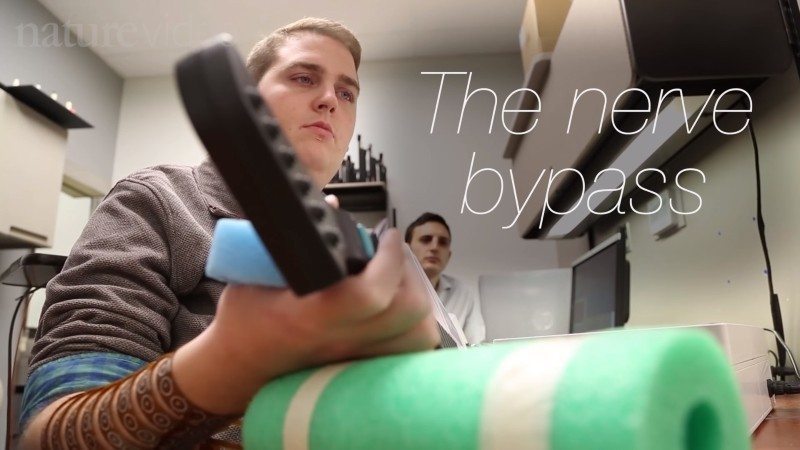Synthetic Nervous System Allows Paralyzed Man to Move Again
Alexander Neil / 9 years ago

Injuries to the spinal cord that are severe enough to result in paralysis rob their victims of many of the abilities that we take for granted in our daily lives as the built-in biological wiring we rely on to make use of our limbs becomes damaged or broken. For those affected, this often means a lifetime of special care in order to continue to live out their lives even without use of their own bodies. It is a problem that researchers have been tackling for many years with basic mind-controlled robotic limbs already a reality. This research has now gone one step further than ever before as a paralyzed man has been able to control his own hand, not a robotic replacement, using just his mind.
The details of this “neural bypass” technology were published on Wednesday in the journal Nature. The technology is able to reconnect a patient’s mind with the functional muscles in their limbs, which serves as a sort of synthetic nervous system bridging gaps left by spinal damage. The patient who tried out the technology, Ian Burkhart, is a 24 year old man, who was left quadriplegic ever since a road accident six years ago was able to make use of his hand once again. During the study, it showed that he was capable of performing a number of actions using his hand, from basic finger movement, grasp objects of varying sizes, swipe a credit card and, amazingly, play a game of Guitar Hero.
Burkhart believed that the technology was capable of changing lives, stating in a press conference that “if or when I can use this system outside of the clinical setting, it will really increase my quality of life and my independence, and decrease the amount of assistance I need from other people.” Getting this far wasn’t easy either, as getting just this far required Burkhart to attend 3 weekly sessions for 15 months. During this time, he developed the ability to pull off six hand and wrist movements and was eventually able to even move his fingers individually, exceeding the expectations of the researchers at Feinstein Institute for Medical Research. His mastery continued to develop over time and he was able to perform more complex and coordinated tasks like putting a cup to his mouth and playing Guitar Hero.
This “neural bypass” works by making use of a microelectrode array implanted in the brain. This allows certain brain activity to be picked up which researchers had identified prior to the implant using functional magnetic resonance imaging (fMRI) to identify hand-controlling areas of the brain as Burkhart thought about using his hand. The neural bypassing system takes the data from the electrode array and uses machine learning algorithms to translate the input to a flexible arm sleeve containing 130 muscle-stimulating electrodes.
There is still a long road ahead for the technology, with the biggest leap being able to make it function just as well outside of the clinical setting as well as developing applications of the system for patients with other types of paralysis. Regardless, Burkhart is very optimistic about the research as only a few years after the technology gave him the basic ability to move his hand, things have continued to develop at a rapid rate and could be usable sooner than anyone expects.



















